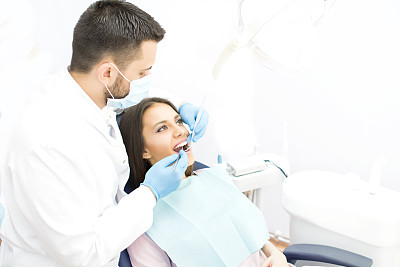Essential Guidelines to Follow After Receiving a Dental Filling for Optimal Oral Health and Comfort
Summary: After receiving a dental filling, its crucial to prioritize oral health and comfort by following specific guidelines. These recommendations can greatly influence recovery and overall satisfaction with dental treatments. This article elaborates on four essential aspects: understanding post-treatment sensations, maintaining oral hygiene, making dietary adjustments, and scheduling follow-up visits. Each section highlights practical insights to ensure that patients feel comfortable, minimize complications, and enhance the longevity of their dental fillings. By adhering to these guidelines, patients can safeguard their oral health and enjoy peace of mind after their dental procedures.
1. Understand Post-Treatment Sensations

After receiving a dental filling, it is essential for patients to understand what sensations are normal. Initially, some patients may experience slight sensitivity to hot or cold temperatures. This discomfort can usually be attributed to the localized trauma during the filling process and should diminish over time.
Another common sensation is the feeling of pressure or tightness around the filled tooth. This often occurs due to the filling being slightly higher than the surrounding teeth, which may require adjustments. It鈥檚 important to monitor this feeling as it may indicate that the filling needs to be polished or reshaped by your dentist.
Some patients may also notice a dull ache or tenderness in the area. While this is typically a part of the healing process, if the pain persists or worsens, it鈥檚 advisable to contact your dentist. Understanding these post-treatment sensations can help manage expectations and alleviate anxiety during recovery.
2. Maintain Excellent Oral Hygiene
Maintaining optimal oral hygiene is crucial after receiving a dental filling. Proper brushing techniques should be prioritized, particularly around the filling. Use a soft-bristled toothbrush and fluoride toothpaste to avoid damaging the filling while effectively cleaning the area.
Flossing should also remain a vital part of your dental care routine. Take care to gently maneuver the floss around the filled tooth to prevent plaque buildup, but avoid forcing it to prevent dislodging the filling. Using an antibacterial mouthwash can further enhance oral hygiene and help prevent infection.
Regular dental check-ups should be scheduled to monitor the condition of the filling and overall oral health. Through professional cleanings and examinations, potential issues can be identified early, ensuring that the filling remains intact and effective.
3. Make Dietary Adjustments
Diet plays a significant role in the healing process following a dental filling. Its advisable to avoid sticky or chewy foods that can dislodge or damage the filling in the early days after the procedure. Consider choosing softer foods like yogurt, mashed potatoes, and smoothies that require minimal chewing.
Furthermore, it鈥檚 crucial to steer clear of extremely hot or cold foods immediately after treatment. These can exacerbate sensitivity issues and create discomfort in the recently filled tooth. Once sensitivity decreases, gradually reintroducing a normal diet can help identify any lingering sensitivity.
Hydration is equally important. Drinking plenty of water, especially after meals, can help wash away food particles and bacteria, contributing to a healthier oral environment. By being mindful of dietary choices, patients can promote smooth healing and minimize discomfort post-filling.
4. Schedule Follow-Up Visits
Follow-up visits to the dentist are essential for ensuring the long-term success of dental fillings. Generally, a follow-up check-up is recommended a few weeks post-procedure to evaluate the fillings integrity and any potential discomfort.
During these follow-ups, patients should communicate any ongoing issues, such as persistent pain or sensitivity. This is the time to address concerns and ask questions, allowing dental professionals to provide tailored recommendations for optimal care.
Additionally, understanding the lifespan of the filling can guide patients in scheduling regular check-ups. Most fillings can last several years with proper care, but keeping up with dental visits ensures timely repairs or replacements, ultimately protecting oral health.
Summary:
In summary, following these essential guidelines after receiving a dental filling can greatly enhance oral health and comfort. Understanding sensations post-treatment, maintaining good oral hygiene, making thoughtful dietary choices, and scheduling follow-up visits are all key components of the healing process. By adhering to these recommendations, patients can minimize discomfort and ensure the longevity of their dental work.
This article is compiled by Vickong Dental and the content is for reference only.


